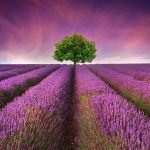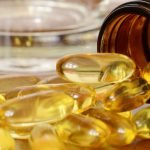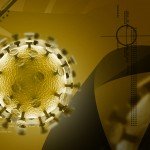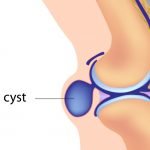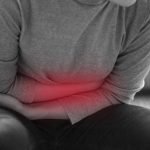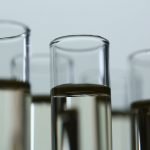Gallbladder Disease: Not Just a Problem for Women
Vis Medicatrix Naturae
Robin DiPasquale, ND, RH (AHG)
It is estimated that 15% of the US population – about 20 million people – have some degree of gallbladder disease (GBD). The prevalence of GBD increases with age, and can often be asymptomatic, until it isn’t anymore.
When a gallbladder attack comes on, there is often extreme and unrelenting pain, which can last for hours. People often go to the emergency room looking for relief. Analgesic medications such as acetaminophen or codeine may decrease pain. Anticholinergics, such as hyoscine butylbromide, may decrease the spasms. But nobody wants to experience this again… which is why cholecystectomy, ie, surgical removal of the gallbladder, has become the gold standard of treatment for GBD. Out of every 100 people diagnosed with biliary colic, 22 are referred for cholecystectomy.1 People are increasingly choosing elective cholecystectomy as a preventative measure against the severe complications of acute cholecystitis, acute biliary pancreatitis, or acute cholangitis.2 But is this really the best choice, to lose an organ when the condition might be managed more conservatively? Brazzelli reviewed 2 Norwegian studies including a total of 201 participants with symptomatic GBD.3 During the 14 years of the study, 88% of the patients who had been randomized to surgery, and 45% of those who had been randomized to observation, underwent cholecystectomy. That meant that 12% of the surgery-randomized group, and 55% of the observation-randomized group, did not require surgery.3 So perhaps there are other options, but patients have to be willing to make changes in their lifestyle and diets – not always an easy sell.
Contributing Factors to GBD
Everyone remembers the “5 Fs” mnemonic for cholelithiasis as a rule-out in upper abdominal pain: fair, fat, female, fertile, and forty. In a 2013 study, Bass et al confirmed most of these parameters, and included an additional parameter that begins with the letter F, that being family history.4 Of 398 patients with upper abdominal pain, 198 cases were diagnosed with GBD by ultrasound. Of those, 150/198 were women, 144/198 were fair, and 135/198 were fertile, ie, of child-bearing age. Interestingly, although we often think of overweight and obesity as a contributing factor to GBD, only 56/198 had a BMI >30. And while the study found that 82/198 were over 40, those with a family history of at least 1 first-degree relative with GBD was 78/198 – close to the same number as the over-40 group.4
While Bass et al showed overweight and obesity to be a contributing factor for developing GBD in only 28% of participants, other studies have confirmed the correlation with weight. Radmar et al, for example, looked at the ability of abdominal/visceral fat to predict gallbladder disease.5 Of 1494 participants, 51.4% were men over 50 years of age. Their research found a significantly increased risk of GBD among men with an elevated waist:hip ratio. For women, the BMI and waist:height ratio were found to be more significant in determining GBD risk.5 In a prospective study of 29 847 men with no prior history of gallstone disease, 1117 new cases of symptomatic gallstone disease were documented over a 2-year period, linked to increased waist: hip ratio and waist circumference.6 In other words, among these men, increased abdominal circumference was a more significant contributing factor to GBD symptoms than was BMI.
We know that a primary contributing factor to abdominal adiposity is metabolic syndrome, which can be a precursor to type 2 diabetes. A population-based study of 1250 men and 1656 women showed that the odds of developing GBD was 1.6 times greater when type 2 diabetes was present.7 A retrospective cohort study, including 337,067 type 2 diabetics and the same number without diabetes, produced similar findings: the type 2 diabetes cohort had a 1.91-fold greater risk of biliary disease compared to the non-diabetic cohort.8
Although dietary fat intake may not contribute to increased GBD prevalence in women, it might in men. In a population-based study of Mexican Americans (who have a higher prevalence of GBD9), the women reporting the highest intake of total fat and linoleic acid showed reduced risk for GBD, whereas the opposite was observed in men.10
Hormones appear to be another gender difference in terms of GBD risk, as there seems to be a direct relationship GBD and estrogen. The rates of GBD are 2-3 times higher in women compared to men, but primarily during the childbearing years.11 Pregnancy is a major risk factor for gallstone formation. Higher estrogen levels increase biliary cholesterol secretion, causing cholesterol saturation of bile and reduced gallbladder motility.11
If this is the case, that estrogen is linked with the increased risk of GBD for women, then GBD risk should go down as women move into menopause and estrogen levels decline. Estrogen replacement therapy should restore that risk. It is also possible that as men age, and their estrogen levels increase through the aromatization of testosterone to estrogen, their own risk of GBD would increase.
Treatment Considerations
Diet can be the most significant contributor to GBD, and the most potent path to resolving it. A plant-based diet may be optimal for patients, including plenty of vegetables, some fruits, legumes, grains, nuts, and seeds. Lean meats can be included in small portions. High-quality oils, in small-to-moderate amounts, are an important source of fatty acids; examples include olive, avocado, flax, walnut, coconut, and sesame oils. Eating smaller meals overall can reduce the burden on the digestive system. The caffeine in coffee, tea, and chocolate can trigger contraction of the gallbladder, so have your patients be mindful when eating or drinking caffeinated products.
Bitter herbs are useful in GBD because of their ability to prime the entire digestive system, including the release of bile from both the liver and the gallbladder and the thinning of bile throughout the system. A comprehensive plant-based digestive enzyme taken with meals can be useful, as amylase, protease, and lipase will contribute to the breakdown of all 3 major macronutrients, including fats. Plant-based enzymes are more easily digested and absorbed compared to pancreatin, thus useful for a person with an already compromised digestive system.
There are 2 specific drinks that can be a supportive component of treatment for GBD. One of them is simply a cup of warm water with the juice of one-half lemon, to be sipped each morning. This drink will engage the liver, enhance flow bile, increase metabolic rate, and help maintain a balanced pH. This is actually a good idea for anyone, not just those with GBD. The second drink contains 8 ounces of water and 2 tsp apple cider vinegar (ACV), also to be sipped. Some people love this; some people hate it.
I had one patient add the ACV to a glass of apple juice every morning, hoping the malic acid in the apple juice would soften and dissolve his gallstones. I’m not sure about the effectiveness of this approach, since he wound up having his gallbladder removed a few months later. I did, however, have another patient who was in the middle of a gallbladder episode (milder than an attack) while traveling on a plane, and she appeared to resolve the spastic squeezing sensation by eating an apple.
For anyone with GBD, castor oil packs combined with 30 minutes of heat over the liver and gallbladder several days per week will help to decrease inflammation, soften any stones, and support the flow of bile. In my clinical experience, the essential oil of rose geranium is a valuable addition due to its antispasmodic action. If patients are not keen on the idea of the castor oil pack, or say they don’t have time for it, I often have them massage the castor oil over the liver/gallbladder area, put on an old T-shirt, and climb into bed. The heat of their bodies will help with the absorption of the castor oil throughout the night.
Herbal Solutions
The Eclectic literature doesn’t speak directly about GBD; however, discussions of the herbs that act on the liver make reference to it in several books. Following are a few pearls.
Chelidonium majus
Felter11 holds Chelidonium majus (celandine) as a top choice of herbs for this condition. Felter’s key notes include the following:
- Biliary catarrh resulting from hepatic congestion
- Jaundice due to swollen bile ducts as a result of subacute sluggish liver action
- Light, pasty stools
- Throbbing pain of the hypochondrium, with dull pains extending to beneath the right shoulder blade
- This herb can prolong the intervals between attacks of gallstone colic
Ellingwood13 wrote about Chelidonium being used for the treatment of biliary calculi, and comments that many physicians consider it superior to any other agent known for preventing gallstone formation.
Matt Wood, in The Book of Herbal Wisdom,14 reports that Chelidonium is used almost the same way in both homeopathy and herbalism – as a liver remedy with an affinity to the bile. He also notes that Chelidonium is a very important herb for “gallbladder headaches,” and includes it on the list next to Sanguinaria. Its bright yellow/orange sap exemplifies the doctrine of signatures.
Ellingwood13 writes about herbs to prevent gallstones, listing Chionanthus virginica, Iris versicolor, Leptandra virginica, and Podophyllum peltatum. He doesn’t mention Fumaria officinalis, but I’m adding it to this list.
Chionanthus virginica
Chionanthus virginica (fringe tree) is a cholagogue cathartic; however, its best effects are seen in acute congestion of the liver, with imperfect discharge of bile or catarrh of the common bile duct.13 Chionanthus conquers catarrh, liquifies the bile, prevents the formation of calculi, and promotes the discharge of stones that have formed. It is not indicated for impacted gallstones.
Iris versicolor
Ellington’s key notes for Iris versicolor (blue flag) are as follows13:
- When the stools are clay colored, the urine scanty, and the skin inactive and jaundiced
- Gastralgia and gastrodynia with vomiting or regurgitation of food, especially after eating fats or rich pastry
- Diarrhea, with a burning sensation after the passage of stool
- Jaundice arising from duodenal catarrh and obstruction of the biliary ducts
Matt Wood writes this about Iris: ”Causing a liquidification of the bile, so that it flows freely from the hepatic structures, producing yellow to orange diarrhea with itching of the anus, which showed up in the homeopathic proving.”14
Leptandra virginica
Here are Ellington’s key notes for Leptandra virginica (Culver’s root)13:
- Pressure in the right hypochondrium
- Torpor of the liver
- Jaundice
Podophyllum peltatum
Ellington lists these key notes for Podophyllum peltatum (May apple),13 many of which you will recognize as signs and symptoms of GBD:
- This remedy is demanded in inactive conditions of the gastrointestinal tract
- Heavily coated tongue, thick and broad and pale, with a coat of dirty yellow color, especially at the base
- Biliousness with inactive liver, sallow skin and conjunctiva, constipation, and highly colored urine
- Enlargement of the liver with general indisposition, soreness over the liver, and pain through the right side and under the right scapula
For these symptoms, Ellington offers the following formula, warning the reader that it will not taste good13:
- Podophyllum tincture: ½ dram
- Leptandra tincture: ½ dram
- Capsicum tincture: 20 minims
- Syrup of licorice: ½ oz
- Port wine, to make 4 oz total
Directions: Take 1 tsp every 2-3 hours
For removal of gallstones, Ellington recommends ½ to 1 grain dose of Podophyllum, repeated once or twice, followed by ½ pint of olive oil.13 He says the results may be painful, but the patient will have subsequent relief.
Fumaria officinalis
Fumaria officinalis (fumitory) is a plant in the Fumariaceae family, which used to be the Papaveraceae family; other useful members of the Fumariaceae family include Corydalis (turkey corn) and Dicentra (bleeding heart and Dutchman’s breeches). All of these herbs work to diminish gallbladder pain.
Here are Felter and Lloyd’s key notes for Fumaria,15 which are not so specific about GBD:
- Used in jaundice
- Obstruction of the abdominal viscera
- In cases of debility of the digestive organs
Other Considerations
Herbal formulas for GBD can also include these liver herbs: Cynara scolymus (globe artichoke), Taraxacum officinalis (dandelion root), Mahonia spp (Oregon grape), Silybum marianum (milk thistle), and Arctium lappa (burdock).
Gemmotherapy
I always like to bring up the gemmotherapy remedies whenever they might be indicated for a condition, as they work to bring drainage to specific organs and systems. In the case of GBD, the most indicated of all gemmo remedies is Rosmarinus officinalis (rosemary). Rosmarinus is specific for liver and gallbladder drainage, it regulates motility of the gallbladder, and it acts as a cholagogue and choloretic, helping to move bile and stimulate its production, respectively.
Here are some additional gemmo remedies that have been found useful:
- Fraxinus excelsior (ash): helps with drainage of liver and kidney; reduces cholesterol
- Acer campestris (hedge maple): regulates the saturation of bile with cholesterol, preventing the formation of sand and stones in the gallbladder
- Prunus amygdalus (sweet almond): reduces lithiasis in the bile ducts
- Secale cereale (rye): supports drainage and decreases inflammation in the liver
- Corylus avellana (hazel): helps regulate cholesterol metabolism in the liver
- Juniperus communis (juniper): supports liver and kidney drainage
Closing Comments
As gallbladder disease involves a great deal of spastic action, remember to include antispasmodic herbs in your formulas. Ellingwood writes about herbs for pain during the passing of stones, listing Dioscorea villosa, Hydrastis canadensis, Lobelia inflata, Piscidia erythrina, and Podophyllum peltatum; Dioscorea and Lobelia are specifically antispasmodic.13
One of our brilliant colleagues has formulated an antispasmodic combination that includes Viburnum opulus, Actaea racemosa, Petasites, Valeriana, Matricaria, Mentha piperita, Viburnum prunifolium, Glycyrrhiza, and Atropa belladonna.16
Lastly, keep in mind the emotions related to the liver and gallbladder (per TCM), including anger, irritability, frustration, resentment, jealousy, and envy. Whether you work with Family Constellation Therapy, EMDR, EFT, flower essences, hypnosis, or some other modality when working with your patients, remember to work holistically by also attending to the mental, emotional, and spiritual aspects of gallbladder disease – or any disease, for that matter. It’s essential.
References:
- Bayram C, Valenti L, Miller G. Gallbladder disease. Aust Fam Physician. 2013;42(7):443.
- Urbach DR, Stukel TA. Rate of elective cholecystectomy and the incidence of severe gallstone disease. CMAJ. 2005;172(8):1015-1019.
- Brazzelli M, Cruickshank M, Kilonzo M, et al. Clinical effectiveness and cost-effectiveness of cholecystectomy compared with observation/conservative management for preventing recurrent symptoms and complications in adults presenting with uncomplicated symptomatic gallstones or cholecystitis: a systematic review and economic evaluation. Health Technol Assess. 2014;18(55):1-101, v-vi.
- Bass G, Gilani SN, Walsh TN. Validating the 5Fs mnemonic for cholelithiasis: time to include family history. Postgrad Med J. 2013;89(1057):638-641.
- Radmar AR, Merat S, Kooraki S, et al. Gallstone disease and obesity: a population-based study on abdominal fat distribution and gender differences. Ann Hepatol. 2015;14(5):702-709.
- Tsai CJ, Leitzmann MF, Willett WC, Giovannucci EL. Prospective study of abdominal adiposity and gallstone disease in US men. Am J Clin Nutr. 2004;80(1):38-44.
- Diehl AK, Haffner SM, Knapp JA, et al. Dietary intake and the prevalence of gallbladder disease in Mexican Americans. Gastroenterology. 1989;97(6):1527-1533.
- Haffner SM, Diehl AK, Mitchell BD, et al. Increased prevalence of clinical gallbladder disease in subjects with non-insulin-dependent diabetes mellitus. Am J Epidemiol. 1990;132(2):327-335.
- Maurer KR, Everhart JE, Ezzati TM, et al. Prevalence of gallstone disease in Hispanic populations in the United States. Gastroenterology. 1989;96(2 Pt 1):487-492.
- Noel RA, Braun DK, Patterson RE, Bloomgren GL. Increased risk of acute pancreatitis and biliary disease observed in patients with type 2 diabetes: a retrospective cohort study. Diabetes Care. 2009;32(5):834-838.
- Novacek G. Gender and gallstone disease. Wien Med Wochenschr. 2006;156(19-20):527-533.
- Felter HW. The Eclectic Materia Medica, Pharmacology, and Therapeutics. Sandy, OR: Eclectic Medical Publications; 1983; originally published in 1922.
- Ellingwood F. American Materia Medica, Therapeutics and Pharmacognosy. Sandy, OR: Eclectic Medical Publications; 1983; originally published in 1919.
- Wood M. The Book of Herbal Wisdom: Using Plants As Medicines. Berkeley, CA: North Atlantic Books; 1997.
- Felter HW, Lloyd JU. King’s American Dispensatory. Sandy, OR: Eclectic Medical Publications; 1983; entirely rewritten and enlarged in 1898.
- Heron Botanicals: Product Listings. 2018. Available at: http://www.heronbotanicals.com/files/catalog.pdf. Accessed October 10, 2018.
 Robin DiPasquale, ND, RH (AHG), has been practicing in the healing arts for over 30 years. Dr DiPasquale served as faculty at Bastyr University for 15 years where she chaired the Botanical Medicine department, was a clinical supervisor, and taught botanical medicine and homeopathy. After moving to Madison, WI, she opened a family practice, Red Lotus Healing Arts. She was also the first ND to work directly in patient care through the U of WI Integrative Medicine Clinic. Dr DiPasquale now lives and practices in Fort Collins, CO. She has been teaching on-site and on-line courses in Gemmotherapy for over 10 years. Her newest passion is Family Constellation Therapy.
Robin DiPasquale, ND, RH (AHG), has been practicing in the healing arts for over 30 years. Dr DiPasquale served as faculty at Bastyr University for 15 years where she chaired the Botanical Medicine department, was a clinical supervisor, and taught botanical medicine and homeopathy. After moving to Madison, WI, she opened a family practice, Red Lotus Healing Arts. She was also the first ND to work directly in patient care through the U of WI Integrative Medicine Clinic. Dr DiPasquale now lives and practices in Fort Collins, CO. She has been teaching on-site and on-line courses in Gemmotherapy for over 10 years. Her newest passion is Family Constellation Therapy.




